calsfoundation@cals.org
Ulm (Prairie County)
| Latitude and Longitude: | 34°34’33″N 091°27’38″W |
| Elevation: | 207 feet |
| Area: | 0.26 square miles (2020 Census) |
| Population: | 175 (2020 Census) |
| Incorporation Date: | February 12, 1909 |
Historical Population as per the U.S. Census:
|
1810 |
1820 |
1830 |
1840 |
1850 |
1860 |
1870 |
1880 |
1890 |
1900 |
|
– |
– |
– |
– |
– |
– |
– |
– |
– |
– |
|
1910 |
1920 |
1930 |
1940 |
1950 |
1960 |
1970 |
1980 |
1990 |
2000 |
|
115 |
194 |
152 |
146 |
131 |
140 |
185 |
201 |
193 |
205 |
|
2010 |
2020 |
|
|
|
|
|
|
|
|
|
170 |
175 |
|
|
|
|
|
|
|
|
Ulm is a town in southern Prairie County, on U.S. Highway 79 between Clarendon (Monroe County) and Stuttgart (Arkansas County). Although the town is named for a city in southern Germany, the pronunciation differs from the German, with Arkansans speaking the name of the town as a two-syllable word (“Ull-im”).
The Grand Prairie region of Arkansas was sparsely settled until after the Civil War. According to local tradition, German immigrants who had settled in Illinois and served in the Federal army during the Civil War were awarded land grants in Arkansas. The first veteran to view the land returned to Illinois and traded his land grant for several gallons of whiskey, but other German immigrants made the trip and chose to stay in Arkansas. One of the first residents, Carl Payer, donated land for a Lutheran church in 1881. Using funds donated by their former congregation in Mount Olive, Illinois, and with the assistance of Pastor C. F. Obermeier from First Lutheran Church in Little Rock (Pulaski County), the settlers established Zion Lutheran Church in 1883. Although the settlement was nearly named Payer, the settlers chose instead to name the town for their former home in Germany, the Bavarian city of Ulm.
Early settlers supported themselves by hunting, raising cattle, and cutting hay. They also planted winter oats to ship to cattle farmers in northern states. Local historians report that non-German neighbors harassed the newcomers by settling prairie fires and even burning down the settlers’ homes, but no written records from the nineteenth century confirm this.
Two dramatic changes promised success to the new community. First, in the 1880s, the St. Louis Southwestern Railway, usually called the Cotton Belt, was built through the area, providing railroad service to the community of Ulm. Second, early in the twentieth century, farmers on the Grand Prairie began experimenting with rice as an alternate crop to cotton or wheat. The experiment succeeded, and many farmers in the Ulm area began growing rice. A post office was established in 1888. By 1900, the Ulm community had a bank, a sawmill, a cotton gin, a creamery, a lumber yard, a variety of stores, and a park. Zion Lutheran Church and School continued to be the center of the community’s focus, and a larger church building was built and dedicated in 1903. The town was incorporated in 1909.
The city park was used for an annual rice festival, for Independence Day celebrations, and for other community events. Local residents formed a brass band to entertain at the gatherings. Ulm did not grow as quickly as Stuttgart, although a new larger Lutheran church building was dedicated in 1955. Highway 79, which passes through Ulm, was commission in 1935 and completed in the early 1940s.
As of 2014, the Lutheran church and school remain the principal employers in the town, although there are also a post office, a city hall, and several other small businesses. Children who attend public school are transported to Hazen (Prairie County). The population of Ulm was 205 in 2000 but dropped to 170 by 2010; the majority of residents are white and non-Hispanic.
Ulm native Bill Kerksieck pitched for the Philadelphia Phillies major league baseball team in 1939, appearing in twenty-three games that year.
For additional information:
Moehring, Erwin. “History of Zion Lutheran Church, Ulm, Arkansas.” Grand Prairie Historical Society Bulletin 1 (January 1959): 1–6.
Whayne, Jeannie, and Willard B. Gatewood, eds. The Arkansas Delta: Land of Paradox. Fayetteville: University of Arkansas Press, 1993.
Steven Teske
Butler Center for Arkansas Studies
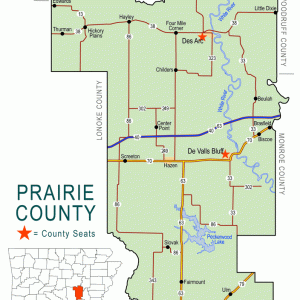 Prairie County Map
Prairie County Map 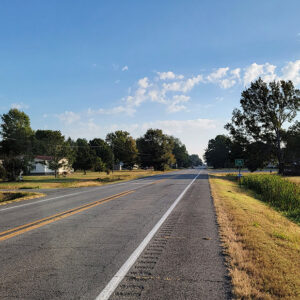 Entering Ulm
Entering Ulm 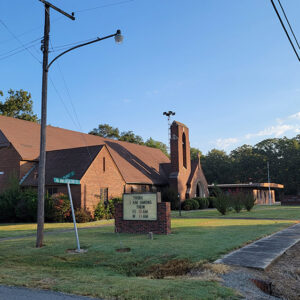 Ulm Church
Ulm Church  Ulm City Park
Ulm City Park 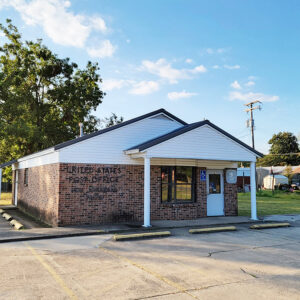 Ulm Post Office
Ulm Post Office  Ulm Scene
Ulm Scene 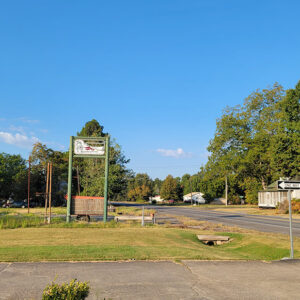 Ulm Street Scene
Ulm Street Scene 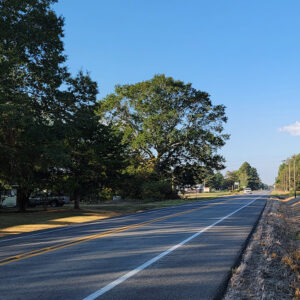 Ulm Street Scene
Ulm Street Scene 




Comments
No comments on this entry yet.